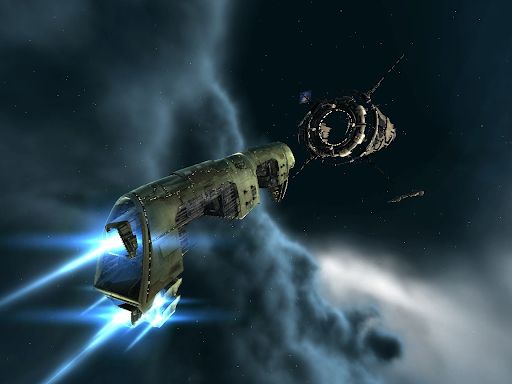The rapid reconquering of Amamake by Ushra’Khan on October 29th took many by surprise, including Ushra’Khan themselves. After steeling themselves for a difficult campaign, the alliance took Amamake in only 24 hours, facing virtually no resistance.
It was an unexpected outcome, considering that Amamake was the site of a hard-fought siege back in July 2022. In fact, Ushra’Khan leader DeT Resprox claimed “The fall of Amamake in July was of huge significance for us. Amamake is a key system for the Republic.”
But for Mikal Vektor, the leader of Local Is Primary [CTRLV], one of the foremost Amarr militia alliances, the swift fall of Amamake was not unexpected, or even a particularly disastrous defeat for the Amarr.
I reached out to Vektor to get his perspective on Local Is Primary’s activities. We spoke about their role in the faction warfare in Essin, Hed, Jayai, and constellations beyond.
The Siege of Amamake
When asked about Amamake, Vektor admits that the system was seized quickly and without much struggle. He complimented Ushra’Khan’s planning, coordination, fleet commanders and fighting skill. He also acknowledged that they had a strong advantage when it came to pilots operating in multiple time zones.
Vektor was very clear that he was not trying to minimize Ushra’Khan’s victory. But he was blunt when explaining the real reason for the system’s fall. “I had people poke me about Amamake, and I was like ‘I have no interest in Amamake’…I didn’t form up a single fleet to defend Amamake.“
For Vektor, Amamake was a solid asset on the frontier. It was a hub system and a strong location for docking ships, but not a major bastion for Amarr forces. For CTRLV, Amamake was just another entry in a string of recent losses, which included Vard and Egmar. “Amamake isn’t a story to write about…” Vektor said. “It’s relatively insignificant. It wasn’t one of the three transmuter systems.”
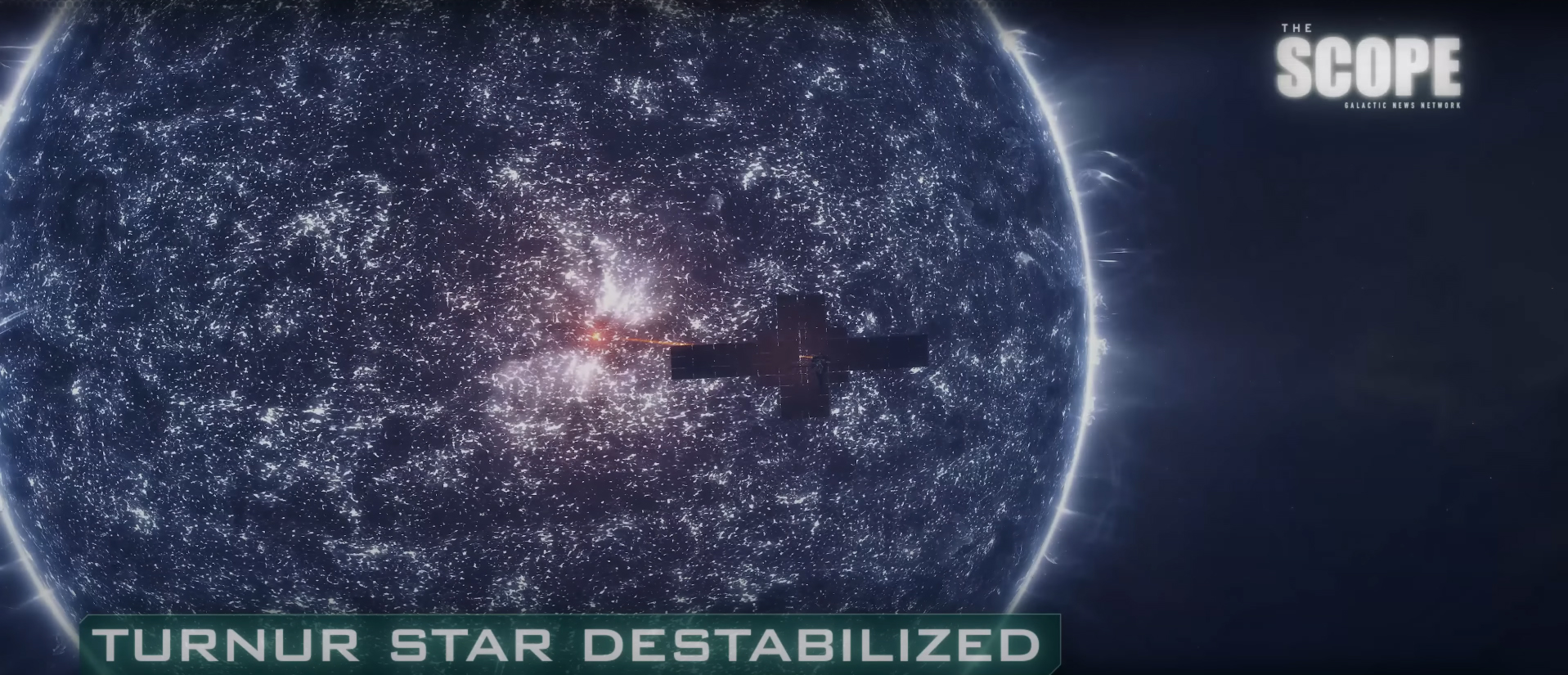
According to Vektor, “The real story is Egmar,” referring to the Amarr militia’s unequivocal loss of the system to Minmatar. Vektor spoke highly of Ushra’Khan’s fighting spirit there, and admits that his forces were strongly outmatched. “It was an absolute bloodbath. At the end of the day, they wanted it more.”
Vektor accepts that Amamake offers value for any alliance who controls it, of course. But control of the system doesn’t frustrate his alliance’s plans. “It is important, in that there’s a Keepstar there. And since they took it, we can’t dock in Amamake, but that’s a non-issue. We have capitals, and supers, and titans, but none of those are in CTRLV…they can still dock and tether.”
For Vektor and CTRLV, Amamake is less of a milestone in the ongoing conflict than a bellwether. It reveals that Ushra’Khan has, for the moment, placed Amarr militia firmly on the back foot. At the time of writing, Minmatar forces controlled 41 systems, while Amarr controlled 29.
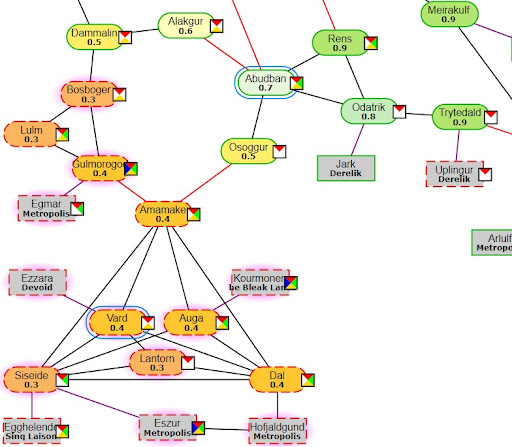
INN: Overall, what is your impression of the current state of conflict (challenges, advantages, opportunities, threats)?
Vektor: …the Minmatar militia has the momentum due to an advantage in the number of folks participating in fleets and timezone coverage. They are generally taking a few systems a day.
One of the biggest challenges is their timezone advantage: Amarr militia has very few AUTZ or RUTZ pilots, and so Minmatar players in those time zones are able to plex uncontested. On the other hand, Amarr militia USTZ is a good bit better organized than Minmatar militia USTZ, and so we can often make progress plexing and/or win most strat-ops that occur in this period.
Unfortunately for us, the importance of apex fleet comps and caps and supers isn’t all that important for FW play, so the degree to which this advantage is helpful is limited
INN: What maxims, philosophies, or guidelines do you and your allies keep in mind when looking at the ongoing conflict?
Vektor: Given our inability to really compete with Minmatar militia in terms of taking or holding FW systems due to their TZ and organizational advantages (with the current system, pre-Uprising change), our philosophy has been to maximize fun and not really care about losing systems. We try to skirmish with Minmatar militia when we can, and not lose sleep over the plexes they run while we’re resting.
Some folks play this game [with the idea that] in order to win, the other side has to be miserable. I feel like that is the most noob, childish perspective. It’s a lot more fun when you’re in a time zone where there’s Minmatar militia to fight. If we can have a fleet where we feed some, and they feed some, that’s pretty fun.
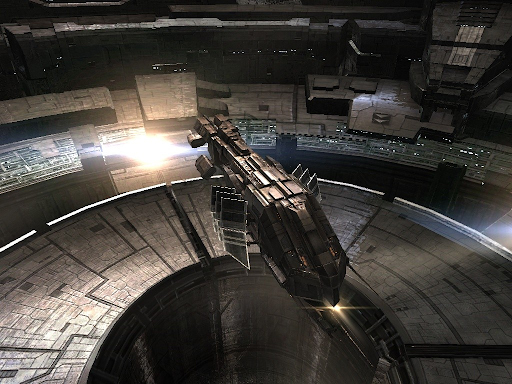
INN: What sets you or your alliance apart from other corps/alliances in New Eden?
Vektor: I’d say the most atypical aspect of CTRLV relative to other groups in the game is that we expressly and openly reject the idea that winning through just outnumbering an enemy is a cool or engaging strategy.
Yes, EVE is a sandbox game, and so if someone derives their enjoyment from blobbing an opponent 2:1, so be it. Instead, our pilots try to leverage multiboxing, better fits, and better piloting to win. We are often unsuccessful, and yes, we sometimes batfone when we feel like an opponent needs to have their behavior modified. Truth be told though, there’s no victory quite like defeating a numerically superior force by just being better and trying harder than your opponent.
One of the things I really like about CTRLV that makes us different from other FW alliances, is that we have relatively few players, but they’re very high effort. In this, we have tried very hard to emulate the success of groups like SNUFF and JUTSU. When CTRLV folks join Teamspeak for a fleet and key up, I know who they are. I know from previous experience what each of those people can bring to the fleet composition, and with how many toons. When your typical CTRLV pilot joins fleet, it’s not just adding 1 to N, or one more nameless voice, to a sea of Muninn pilots. Rather, it’s another friend and EVE enjoyer, whose contributions will push our fleets abilities beyond the sum of its parts.
Playing the game in this way, in my experience, makes for a much more rewarding experience. It’s this kind of comradery that makes EVE really special.
Key Moments & People
INN: In your mind, what have been the key moments of the past 3-4 months?
Vektor: Key moments generally revolve around the three systems in which transmuters were located in the Amarr/ Minmatar warzone. These systems were Turnur, Egmar, and Vard, and the transmuters were added to stars in these systems as part of the most recent narrative arc put on by CCP.
Specifically, the siege of Vard by Minmatar militia was relatively intense, and the subsequent loss of Amarr militia’s staging structure there due to a Minmatar militia batfone was a bit frustrating and impactful, as it called into question Amarr militia’s ability to maintain staging structures in relevant systems.
The siege of Egmar that followed sticks out in my mind as a real memorable event, as it was a solid 4-5 days of near endless plex PVP, involving the largest and most structured plexing fleets I’ve witnessed. Amarr militia Sacrileges slugging it out with Minmatar Diemos in medium plexes were among the most fun I’ve had in recent memory.
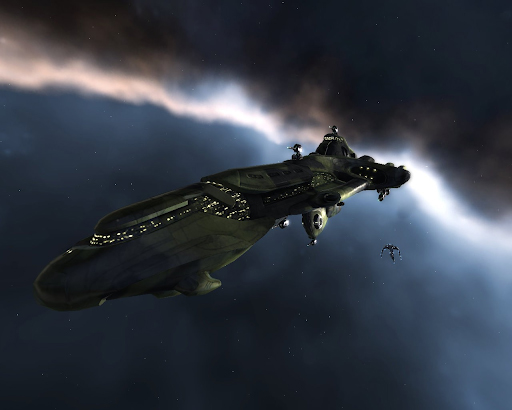
Minmatar militia fought very hard to take the system, and eventually earned their victory just a few weeks ago. This marked a true turning point in the Minmatar militia’s recent rise in numbers and competence, as they were able to match and eventually overpower Amarr militia’s EUTZ, which up until recently, had the upper hand in terms of numbers and organization.
INN: Tell me about a couple of your proudest victories or hardest losses over the past 3-4 months, and what made them so memorable.
Vektor: Among our proudest victories is actually really a manner of defeat. The siege of Egmar was a very intense and draining experience for both Minmatar and Amarr militia.
Your typical fleet member spent hours a day in fleet. FCs spent those hours actively herding cats. Logistics were pushed to the brink with jump freighter pilots coordinating stocking across a dozen different doctrines for each plex size, and quite a bit of ISK was expended in the mutual feeding in plexes.
Amarr militia was able to hold on to Egmar for quite a few days of the siege. Amarr militia holding the system meant that we enjoyed a longer time with a higher rate of passive victory point accumulation towards the research goal for the FW narrative event. Without the collective contributions of Amarr militia pilots, spearheaded by CTRLV, there would not have been a siege in Vard or Egmar. I was proud of our alliance to have helped make that possible.
INN: Tell me about some of the people (both fighters and those working behind the frontlines) that have made a major impact in the past 3-4 months.
Vektor: For Amarr militia , a number of FCs pitched in to help with system sieges over the last few months. I lead most Amarr militia USTZ fleets, but couldn’t do it without the handholding from a team of supportive nerds in CTRLV and RSM (both Amarr militia alliances) leadership.
At the risk of failing to mention some folks (please don’t hurt me), especially impactful FCs include Mandek, Aldrith, WvW, El Profi, Ritto, Twusty, Savros, and many others. Some of these same folks were also helping with ship stocking and logistics—including Shem [RSM], Wittcomb, Twusty, Savros, and Neph.
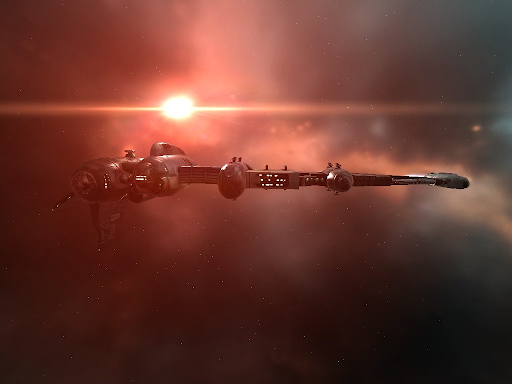
A big part of system sieges is attrition doctrines—doctrines that are designed to be disposable with the understanding that they’ll take some enemies to hell along with us. Think meta-fit Catalysts and Thrashers.
The real champions of the system sieges over the last few months were our logistics guys, without whom we would not have been able to keep feeding a steady supply of rail Catas into smalls to halt the tide of Minmatar militia Thrashers.
The Art of War
INN: What strategies have you and your allies been employing and what are your prime objectives at this point?
Vektor: During the sieges, we primarily relied on attrition, superior logistics, and better doctrines to hold an edge against the numerically superior Minmatar militia forces. Attrition and superior logistics go hand in hand, as one cannot out-attrition an enemy with Catas/Thrashers/Punishers if they run out of those things.
We have a number of jump freighter-capable pilots and indy folks who made hulls locally, and so our attrition game was generally a bit better.
At this point though, post-narrative arc, Amarr militia is ill-equipped to repel Minmatar militia plexing efforts, and so CTRLV has more or less fallen back to our home system of Aset, nestled in the center of a donut constellation called Eugidi. Our current objective is to hold Eugidi. All other objectives are secondary.
INN: What tactics have proven most fruitful for you and your allies? What enemy tactics or ships have you been struggling against?
Vektor: In terms of strategies that we used to fine effect: jams. Lots of jams. Minmatar militia have been using jams to good effect for years, and so we decided to give it a try. Specifically, for Medium plexes, we ran Sacrileges with triple Gallente jams in the mids for Minmatar militia’s Diemos, who, in kind, ran three Amarr jams in their mid slots. We generally did better, I think, than they did—mainly because neuting and jamming their Onerios logistics was more impactful than their jamming our Guardian wing (which enjoys redundant cap chain). We also used jam drones from our Sacrileges because (laughs) why not.
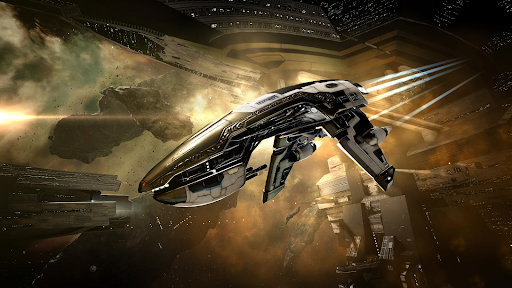
We also use a two-pronged novice plex comp consisting of brawling dual-plate AC Punishers and MWD sniper Hookbills, which are generally superior to anything Minmatar have yet conceived. Punishers scrap at 0 with whatever Minmatar militia bring in and die slowly, while hookbills, anchored 100km off the warp in beacon, provide the alpha necessary to beat through the large number of logistics frigates that Minmatar militia typically bring. Once the Minmatar militia logistics wing is broken, regardless of how many Amarr militia Punishers remain, the fate of the Minmatar fleet is all but certain.
In terms of enemy tactics that we struggled against [it was] mainly Minmatar small plex comps. Amarr militia’s apex small plex comp consists of MWD Magus and Deacons, and it’s not a good comp vs Minmatar’s generic assault frigate comp (often times blarpies) that just goes right through our Magus and Deacons. Because assault frigates are also less SP intensive, Minmatar were also able to get really good comp participation with blarpies, which left our poor little Magus/Deacon fleets hilariously outgunned and outnumbered.
INN: What ships and fits have served you well, and what ships/fits have you been experimenting with?
Vektor: For novices, dual plate AC Punishers and Hookbills have yet to fail against any novice comp we’ve come up against
For medium plexes, Sacrileges with dynamic mids are king. These are only going to get better with the patch. We generally won versus Minmatar militia’s Diemos comp with Sacrileges unless substantially outnumbered.
In terms of experimental comps, we’re looking at the Caracal Navy Issue and Osprey Navy Issue for the navy medium plexes that come with the Uprising release. I’m not sure if they’ll be better than the ancient CTRLV Navy Augoror comp that we used to run 7+ years ago. I hate Navy Augorors though, so I’ll do whatever I can to manufacture an excuse to not fly them.
Also, Navy Dreads. We’re using them. The LP you farm yourself is free, or something like that.
Speaking to New Eden
INN: Please tell me your corp or alliance’s vision for the future.
Vektor: My vision for CTRLV for the future is to continue building a dual purpose low-sec faction warfare alliance that operates on a few principles:
- Batfoning so that you outnumber your opponent and turn a good fight into a blobfest is generally cringe
- FW is a mechanism to create adversaries and content and need not a system to obsess over or a metric to use for success
- Just because we’re an FW alliance doesn’t mean we need to be awful at EVE. We’re going to use caps and supers and get better by taking risks and making mistakes, and learning from them
INN: What would you like to say to your enemies?
Vektor: To Minmatar militia: fantastic job in Vard and Egmar. The level of activity, competence, dedication, and sheer fucking will displayed in taking Egmar was a thing to behold. Props especially to Harkon and Forty Winks. You know how harsh I can be on your militia, and so understand that I’m being sincere here.
To PNS [Ed: Phoenix Naval Systems] (low-sec dwelling bat-phone addicts that skulk one mid away from us): Don’t worry, I haven’t forgotten about you.
INN: What kind of capsuleers do you need most right now?
Vektor: I need pilots that are interested in getting really involved in the game and alliance they’re in. I don’t mean like showing up to a 200-man Heavy Assault Cruiser fleet and pushing F1. I mean high-effort players like Fallendream, who joins comms and upon recognizing his voice, I know he’s going to have armor links, a doctrine DPS ship, a Force Auxiliary, and a Dreadnought sorted, or folks like Maric, who I know has only one account, but is logistics anchor in virtually every fleet where we use logistics cruisers.
I also need FCs, badly. Particularly ones that aren’t afraid to plan an op from start to finish, and send a bunch of CTRLV armor Battleships, Force Auxiliaries, and Dreads screaming into hell.
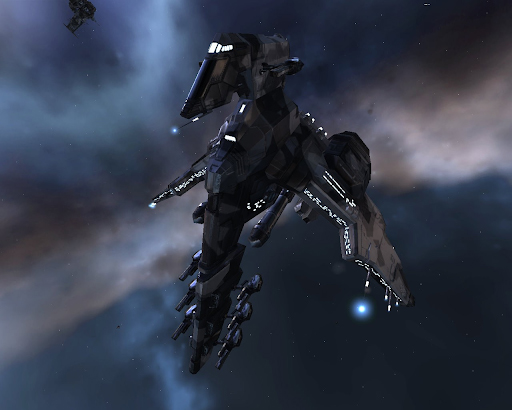
Thoughts on Uprising and the Future of Faction Warfare
In a follow-up, I spoke to Vektor about the future of faction warfare in the wake of Uprising.
“I think the new system is going to be focused on fleet comps for plexing,“ Vektor said. “[But] I really like system sieges… I really like picking a system, filling it to the gills with fits, and causing Minmatar militia to do the same to encourage fleet fights.”
“With the new system, that’s going to change a lot. It looks like [there will be a] higher number of plexes and increased respawn rate, and looks like plexes are navy-restricted, making a lot of [fleet] compositions obsolete.”
According to Vektor, the changes caused by Uprising will change the dynamic of faction warfare in some fundamental ways.
“More plexes means more stability, and Minmatar militia can slide into a different medium plex and not contest,” he speculated. “I think FW is going to favor smaller, more scrappy, more flexible fleets.”
Final Thoughts
For now, Minmatar forces possess more than just the upper hand and the initiative in the warzone. They have the grudging respect of their enemies, as well. While speaking to Vektor, he was unreserved in his praise for Ushra’Khan, though he acknowledges he is usually very harsh.
Vektor’s greatest respect seemed to be for his rival fleet commanders, in particular Harkon Thorson and Forty Winks. “When you see Harkon Thorson appear in Local, you start pinging your guys… Harkon horrifies Amarr militia. He’ll get so many people in fleet, and he’ll get them motivated. He’ll get them owning. I can’t overstate the respect for Harkon.”
Vektor also praised the once-allies of Local Is Primary, the Hidden Leaf Village Ninja Assassin Squad. Especially their Fleet Commander Baltrom, whom he singled out: “Baltrom hates bat-phoning. [His view is] ‘I’d rather just be better, commit harder, and win.'”
Speaking to the leaders of Ushra’Khan, Hidden Leaf Village, and Local Is Primary, I was struck by a common refrain. Each expressed a willingness to risk their ISK, ships, and clones in battles whose outcomes were far from certain.
In New Eden, many choose to eschew risk and bloodshed in favor of making steady profits. The ongoing war on the frontiers shows another picture. There are many capsuleers who will stake their livelihoods on their piloting skills, their leaders, and their fellow corpmates. In time, I believe that these capsuleers will count themselves among the brightest stars in the firmament of New Eden.
